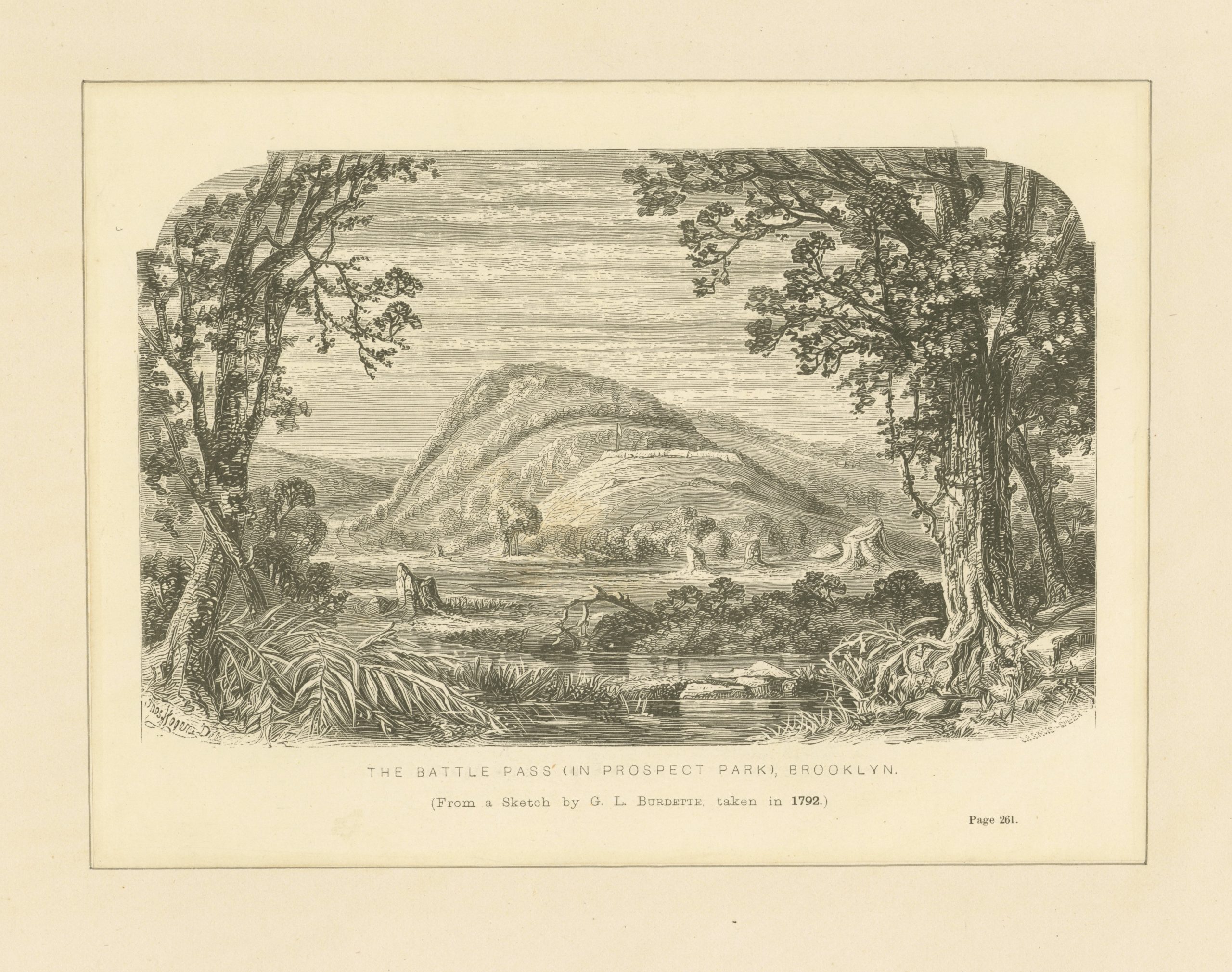6 Historic Landscape Character
The Revolutionary War had a great impact on the vegetation of Long Island and the future site of Prospect Park. Not only was a part of the Battle of Long Island fought within the bounds of the Park in August of 1776, but seven years of war greatly altered the landscape. British occupying forces requisitioned great quantities of firewood from settlers and encouraged them to clear new lands to grow vegetables. As a result the forests of Long Island were almost completely cut down. It is uncertain how much disturbance these actions caused within the area of the Park, but the effect was likely to have been considerable.
The Landscape Management Plan reflects an impressive body of historical research, including what appears to be a thorough review of the botanical literature in order to “obtain lists of the native plant species which would have dominated the lands of western Long Island in pre-Colonial times.” The appendices, which are extensive, provide these lists of native species, organized by habitat and plant type (canopy trees, understory trees, shrubs, and herbaceous).
The account of the historical character of the landscape in the plan describes the development and characteristics of the geology, soil, and vegetation in the area going back to the end of the last ice age, and then tells how Indigenous residents and later European settlers, particularly the Dutch, cultivated the land. The discussion of the period from the Revolutionary War to the creation of the park is, to me, a great disappointment. It seems that there will never be a clear answer to the question of how much of the original forest, if any, survived the war.
As evidence that woods were growing on the hills by the time the park was developed, the Landscape Management Plan cites the passage from the 1866 report by Olmsted and Vaux about the “large body of trees” that “already exist” on the park site as well as a passage from an earlier report by Viele, who wrote, “Nearly one half the area is wooded with trees of large growth, many of them noble specimens of the oak, maple, hickory, dogwood, chestnut and other varieties.” A list of trees “marked and noted in the Park in 1866” is also given, as well as a less positive assessment of the state of the woods reported by Olmsted and Vaux in 1874:
There were originally two main bodies of natural wood on the site of the Park connected by a narrow belt at the point where the Long Meadow is now most contracted; . . . The trees had grown thickly, their lower limbs were dead or dying and two-thirds of all, though yet of but moderate size were decayed in the trunk, many, had also been mangled by violence.

